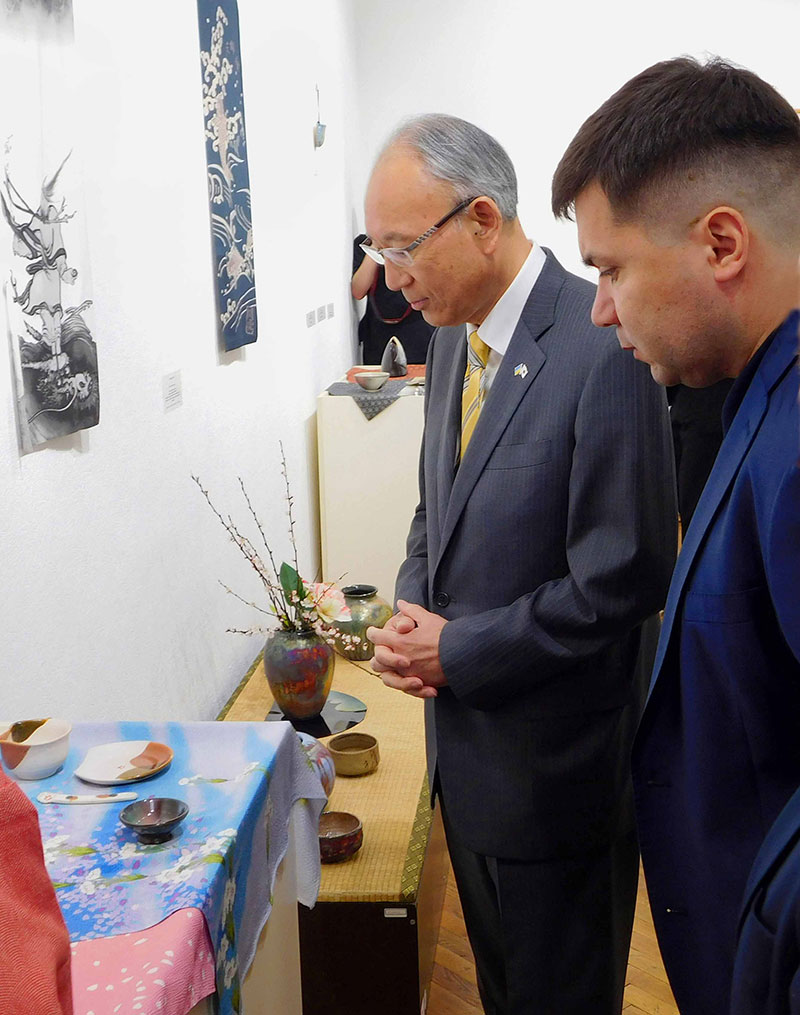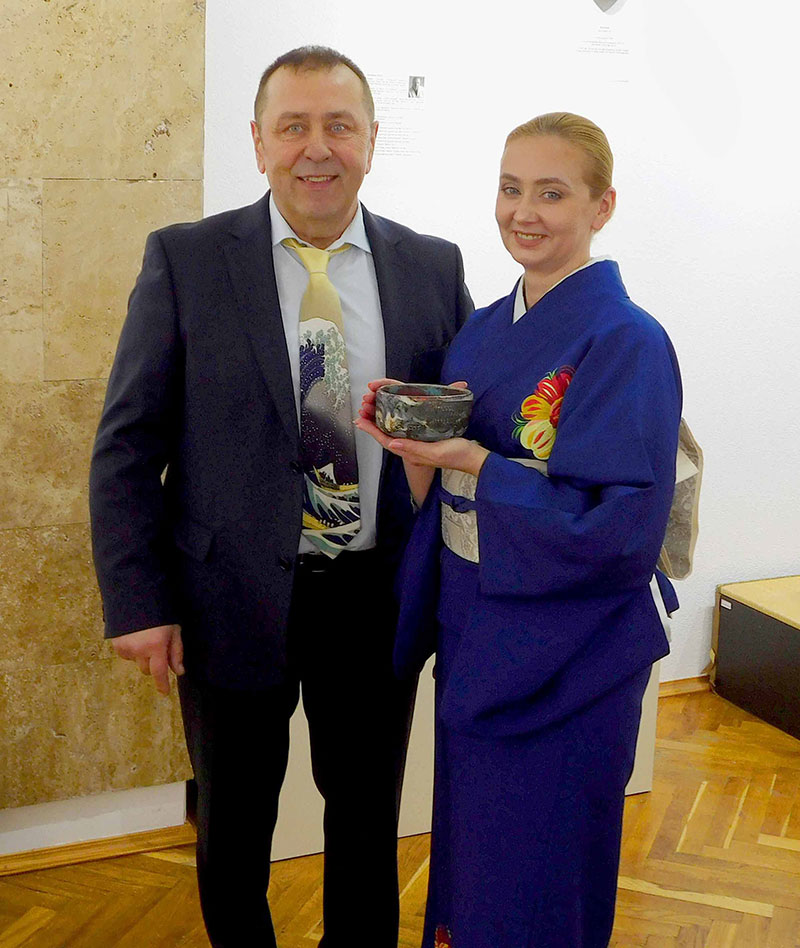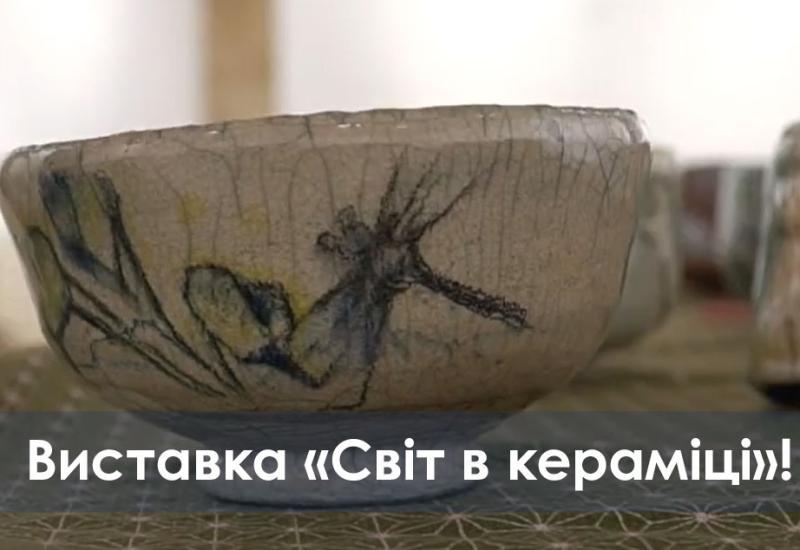An exhibition of ceramics in the traditional Japanese styles of Nunobiki and Raku "The World in Ceramics" was opened at the Ukrainian-Japanese Center of Igor Sikorsky Kyiv Polytechnic Institute. It is worth noting that similar exhibitions have already been held there. However, this is the first time that Nunobiki and Raku products are exhibited in its exhibition hall.
"I am extremely glad that despite the war, we can enjoy cultural events. Igor Sikorsky Kyiv Polytechnic Institute and its Ukrainian-Japanese Center play a significant role in this," Ambassador Extraordinary and Plenipotentiary of Japan to Ukraine Matsuda Kuninori shared his emotions with art lovers who came to the opening of the exhibition. And I hope that this exhibition will help convey to Ukrainians the feelings of Japan and the Japanese and make them feel our support. I want you to know and remember that Japan is a reliable friend of Ukraine and will remain so in the future. And I hope that starting with this wonderful exhibition, this year we will be able to present you with other aspects of Japanese culture and hold various events. I believe that culture comes to those people who appreciate and love it. And the ceramics of Japanese masters are presented here so that you can love it and understand it by touching it with your heart."
However, the exhibition has not only artistic value. It is another manifestation of Japan's friendly attitude towards Ukraine and its citizens. This was stated at the opening ceremony by Andriy Vitrenko, Deputy Minister of Education and Science of Ukraine: "I would like to thank the government of Japan and the entire Japanese people for the invaluable support that Japan provides us in our difficult times - the times of war against the Russians, when we are defending our national identity and independence."
The Nunobiki products on display at Igor Sikorsky Kyiv Polytechnic Institute were created by Japanese craftsmen from the Kojima family. This technique was developed in the ninth century on the eastern shore of Lake Biwa. A characteristic element of its products is the use of green color in the glaze. Then it was forgotten for many centuries, and only in the 70s of the last century a young potter, Kojima Taro, looking for new opportunities in the world of ceramics, became fascinated by the ancient things of the Biwa region and began working on its modern version. His son, Kojima Kazuhiro, and daughter, Kojima Ryoko, took up the task. This family founded and developed the modern version of Nunobiki.

Raku ceramics is represented by the works of Ukrainian master Yurii Karpenko. This is also a modern version of it, because after numerous experiments and attempts, the Ukrainian artist managed to create his own style within the tradition that arose in the 16th century. Generally speaking, Raku ceramics are handmade glazed tea ware made specifically for the tea ceremony, primarily cups without handles. It is interesting that this ceramics is made without a potter's wheel, the mold is sculpted by hand, which is why all products made using this technique are unique.
Yurii Karpenko told a KP correspondent about the peculiarities of the Raku technique and his path to the art of Japanese ceramics. For many years, he was fond of Japanese martial arts, traveled to Japan to study with local sensei, and as an artist fell in love with the traditional decorative and applied arts of this country. Gradually, in addition to martial arts schools, the centers of attraction of his travels to the Land of the Rising Sun included ceramics workshops. He used the knowledge and skills he had gained to create products in his own studio near Kyiv. Later, he began experimenting with materials and firing methods, until during his next visit, his teacher told him that there was no need to teach him anymore: "I am no longer your sensei. I have shown you the way, and you will have to go on your own." Yurii Karpenko shared some of the secrets of his own technique, drew attention to the various effects that appear when using certain materials and changing the firing temperature, but there is simply no room for these technical details on a newspaper page. But everyone can see the fascinating results of these experiments at the exhibition stands.

It should be recalled that Japanese ceramics requires calm and attentive contemplation. Focusing on the products allows you to find more and more of their features, because each piece is unique. The viewer does not feel their warmth immediately, but once felt, they remain under its influence for a long time. That's why viewers usually come to see them again. Moreover, such a visit does not take much time, since these works are kept in only one cozy room of the Ukrainian-Japanese Center.
Finally, we would like to add that during the exhibition, funds are raised for the Kyiv Polytechnic Charitable Foundation for Support of the Armed Forces of Ukraine.
The exhibition "The World in Ceramics" will be on display until April 22, and you will still have time to see it if you wish. It is open from Monday to Friday from 11:00 to 19:00, and on Saturday from 11:00 to 18:00.
Admission is free, but due to increased security measures, the organizers ask that you have an identity document to enter the library.
Унікальний посуд для чайних церемоній, який виготовляють без гончарного кола, умисно спотворюючи форми для досягнення природної краси.В Українсько-Японському центрі КПІ відкрилась виставка «Світ у кераміці» з роботами майстрів у техніках, що мають тисячолітню історію, — нунобікі та раку
.Запрошуємо відвідати виставку «Світ в кераміці»! На виставці представлена кераміка нунобікі від керамістів з Японії – Коджіма Таро, Коджіма Кадзухіро, Коджіма Рьоко та роботи в стилі раку українського кераміста Юрія Карпенка!
Графік роботи виставки (3 - 22 квітня 2024 року):
понеділок – п'ятниця: 11:00 - 19:00
субота: 11:00 - 18:00Вхід вільний.
❗️У зв'язку з посиленням безпекових заходів просимо мати при собі документ, що посвідчує особу.Також протягом квітня по суботах відбуватимуться авторські лекції та майстер-класи від японських та українських майстрів. Cлідкуйте за анонсами .

